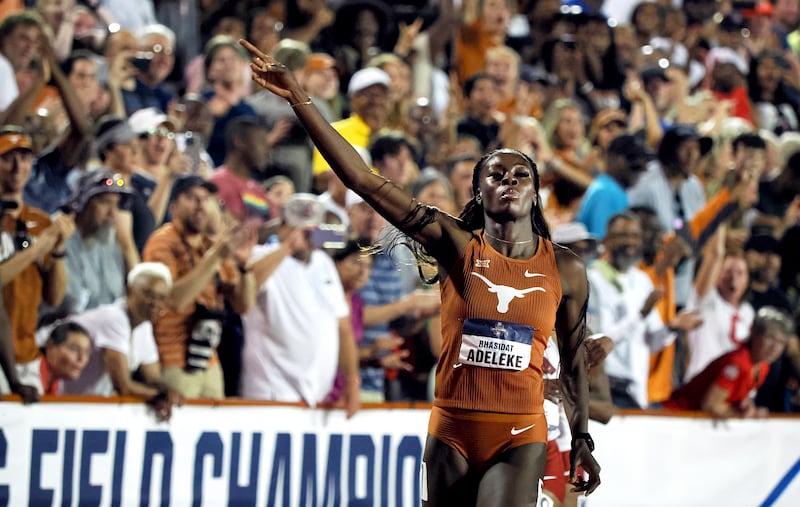Pardon my mixed-up metrics here, but rarely has any 1,500 metres record enjoyed such great mileage. So much so that only this time last year some of us were still wondering if or when it would ever be broken.
Because for all the rumblings in recent weeks about so many records being broken, smashed, obliterated (take your pick), trace the trail of any track and field and marathon progression and it’s never been linear and certainly not predictable.
Like on that July evening of 1982, when Ray Flynn clocked 3:33.5 for 1,500m in Oslo – on route to running 3:49.77 for the mile – no one could have even imagined it would stand as the Irish record for over 40 years.
Aged 25 at the time, for Flynn it became a sort of gentle running joke as the decades passed, and there were several occasions during that period when I revisited the record with him, including this exact time last year, jesting it might yet outlive both of us.
Then, after going untouched again in 2022, Andrew Coscoran came out in February of this year and ran 3:33.49 indoors in Birmingham, taking 0.01 off Flynn’s now 41-year-old mark. For Coscoran, the then 26-year-old from north Dublin, it was unquestionably a psychological barrier broken as much as anything on his stopwatch.
Then in one of his first outdoor races in Nice in June, Coscoran improved it again, winning in 3:32.68, before running 3:30.42 a month later in Poland, now over three seconds faster than Flynn. After running another 3:32.42 in London, he ended up running inside Flynn’s old mark four times this season.
There was something else at play. His 3:30.42 was run when finishing fourth behind Jakob Ingebrigtsen’s new European record of 3:27.14, and in 2023, more men ran under 3:30 or close to it than in any other season (including at the Oslo Diamond League, where eight men broke 3:30 in the same race for the first time in history).
Similarly with the men’s 5,000m, where in 2023, 18 men broke the once impossible 13-minute barrier, the sort of mass progression which in some psychological way also spurred Brian Fay to improve his best to 13:01.40 in Belgium in July. With that he broke the Irish record of 13:03.53 which had stood to Alistair Cragg since 2011. No disrespect, but Fay couldn’t have dreamt of running that sort of time before this year.
Now consider what happened on the women’s front. After Rhasidat Adeleke once again started taking apart the Irish 200m and 400m records indoors, she went at them again outdoors, lowering the 200m mark to 22.34 seconds, then the 400m mark to that stunning 49.20 when winning the NCAA title in Austin in June. An improvement by well over a second in one year, all while still aged 20.

In May, Ciara Mageean regained the Irish 800m record, running 1:59.27 in Manchester, then in July improved by almost three seconds the Irish mile record which had belonged to Sonia O’Sullivan since 1994, running 4:14.58 to finish second in Monaco.
That was the same race where Faith Kipyegon from Kenya claimed her third world record of the season with her astonishing 4:07.64, taking the best part of five seconds off the previous mark. Each of the 13 women who finished ran either a world record, a national record, or a personal record. Quite simply, the greatest women’s mile race ever run.
Earlier this month, Mageean improved her Irish 1,500m record to 3:55.87 in Brussels, her old rival Laura Muir taking the win in 3:55.34. It came a few weeks after Mageean finished fourth at the World Championships in Budapest.
Sarah Lavin spent the summer edging ever closer to the 100m hurdles record of 12.65, set by Derval O’Rourke in 2010, before at those same World Championships in the super-competitive semi-finals, she ran 12.62. Suitably satisfied, Lavin came out just over a week later in Switzerland and broke the Irish 100m record, running 11.27 to improve Phil Healy’s 11.28 mark from 2018.
Between indoors and out, Adeleke broke six Irish records – two at 200m, four at 400m – Mageean broke three, and Lavin two, that tally of 11 a likely record of its own. There were some significant underage records too, the Under-23 1,500m mark of 3:59.68 by Sarah Healy, Under-23 3,000m mark of 8:44.72 by Sophie O’Sullivan, and that European Under-20 gold medal winning mark of 6.56m in the long jump by Elizabeth Ndudi.
And let’s not forget Nick Griggs, who doesn’t turn 19 until December, who this year ran Irish Under-20 records over 1,500m (3:36.09), the mile (3:55.75), the 3,000m (7:53.24), and the 5,000m (13:36.47). Surely another record of its own.
All of this naturally reflects the progression on the global front. So far, 2023 (it’s not done yet) has seen 31 world records or world bests, including indoor, Under-20, road, and relay marks.
At senior level these include Kipyegon’s trio (1,500m, mile and 5,000m), Ingebrigtsen’s double (2,000m and two-mile), Lamecha Girma in the men’s 3,000m steeplechase, Gudaf Tsegay again in the women’s 5,000m, and Mondo Duplantis clearing 6.23m in the pole vault. At the first attempt!
As if to underline in bold the record status of this season, the Diamond League final in Oregon ranked as the overall number one track and field meeting of all-time, producing two world records, 21 national records, nine continental records, five Diamond League records, plus 14 meeting records.
Just as the super spikes were being hung for the year, the autumn marathon seasoned opened in Berlin last Sunday, Tigst Assefa winning the women’s race in 2:11:53 – improving the previous world record by two minutes and 11 seconds. This had plenty of people shouting “not normal”, some of the finest running commentators declaring it incomparable with anything run before.
For Assefa, the 29-year-old from Ethiopia, it probably didn’t help that she promptly removed her newest of the new super shoes and held them up in worship. But this wasn’t entirely new territory in record-breaking terms. Joan Benoit improved the marathon world record by two minutes and 45 seconds back in 1983, and Irish marathon record holder Catherina McKiernan, in Berlin on Sunday, wasn’t “overly surprised” by what she witnessed.
There is clearly some sort of recalibration going on here, given the super shoes and spikes, the wavelength pacing on the track, and improvements in turn in training and recovery. What is also certain is there’s no going back now to previous times, no matter how preferable they might have been, and anyone still shouting that is starting to sound like a broken record of their own.


















